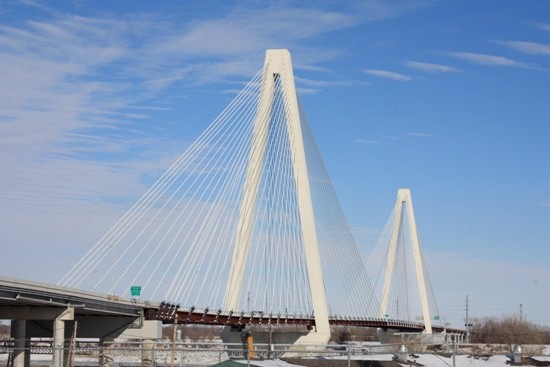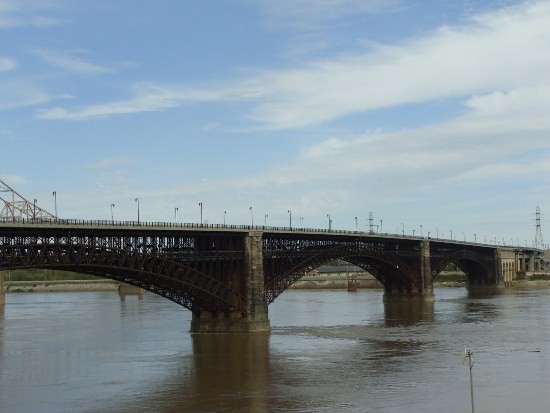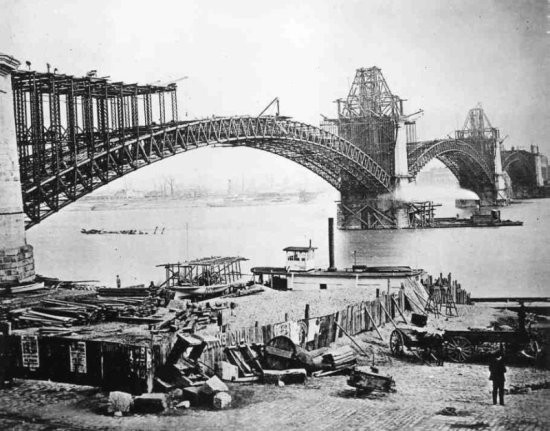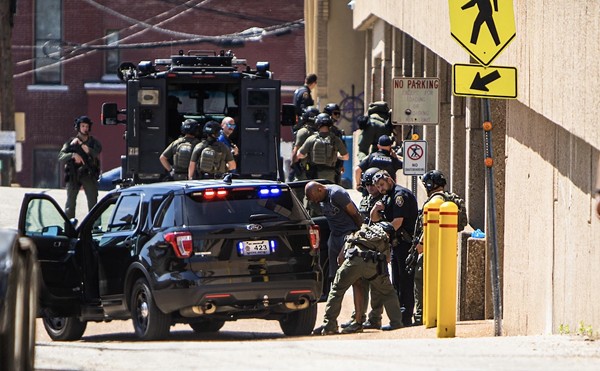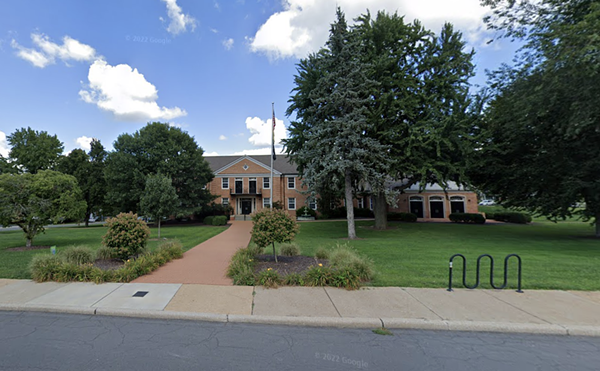The opening of the Stan Musial Veterans Bridge in downtown St. Louis marks an important milestone in the history of the mighty bridges that cross the Mississippi River in St. Louis. Almost a half century has passed since the last bridge, the Poplar Street Bridge, opened in 1967. But the history of the river bridges in St. Louis goes back 140 years, reflecting the changing fortunes and needs of the metropolitan area.
The story starts with the Eads Bridge.
The Eads Bridge was St. Louis' magnificent -- if belated -- response to the Chicago railroad bridge built in 1856 across the Mississippi River between Davenport, Iowa, and Rock Island, Illinois. St. Louis leaders frantically sought to catch up to its northern rival. Powerful riverboat and ferry interests had blocked building a railroad bridge to St. Louis for decades. When they finally agreed to a new bridge to compete with Chicago, the conditions seemed impossible: The new bridge could not block the river while under construction, and it required enough clearance for steamboats to safely pass under the bridge even during high water.
James B. Eads, who had made a fortune salvaging goods from steamboat wrecks and building ironclads in Carondelet for the Union during the Civil War, stepped up to the challenge. The Mississippi River was a formidable foe: Strong currents and mud dozens of feet thick provided treacherous conditions to build even just the two stone piers that would support the three steel arches of the bridge's main span.
Eads used caissons, a new technology developed in Europe to solve the problem of reaching bedrock through the thick, muddy silt of the river, but it was a deadly method. Compressed air pumped into two chambers under the stone bridge piers in the middle of the river provided work space where "sandhogs" excavated the mud from the river bottom. It was hellishly hot, hard work, but the greatest threat waited for workers who came out of the compressed air chambers too quickly. The "bends," named after its victims' reaction to nitrogen bubbles forming in their veins when they reached the surface's uncompressed air too quickly, claimed many casualties.
The next challenge came with the construction of three steel and iron arches that span the river. Blocking the river was out of the question, so Eads used cantilevered supports that allowed for the construction of the arches high above the river without the need for scaffolding. When the bridge opened on July 4, 1874, the entire city came out to see the grand opening. According to legend, an elephant was the first to cross the bridge, owing to the false belief that the pachyderms could detect an unsafe bridge by instinct.
Continue on to see the legacy of the Eads Bridge

